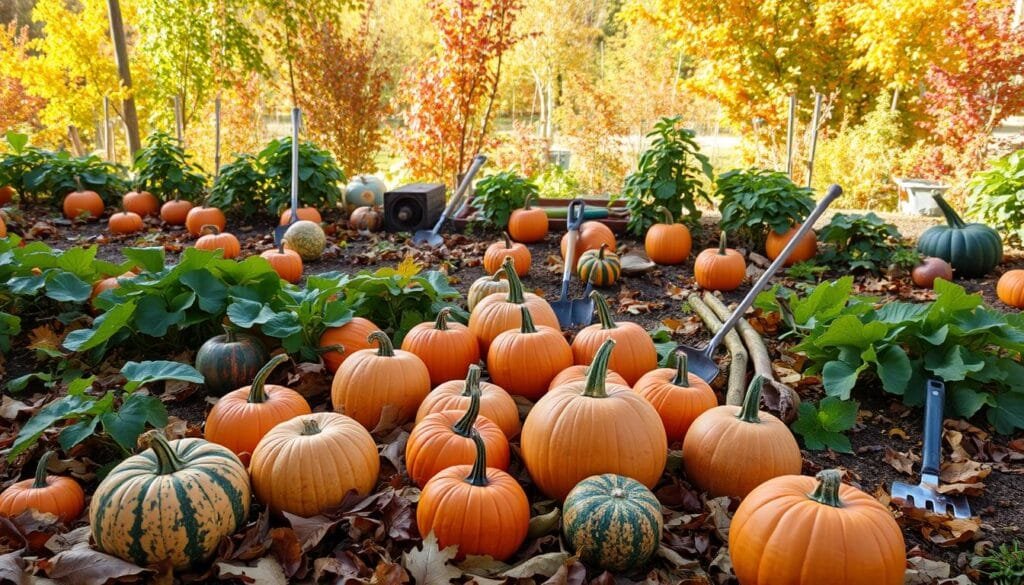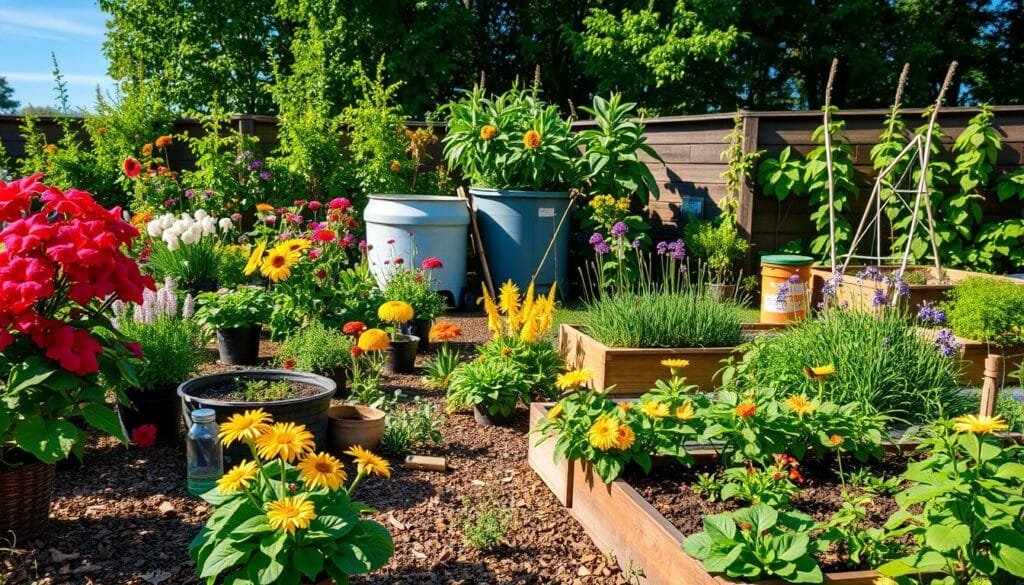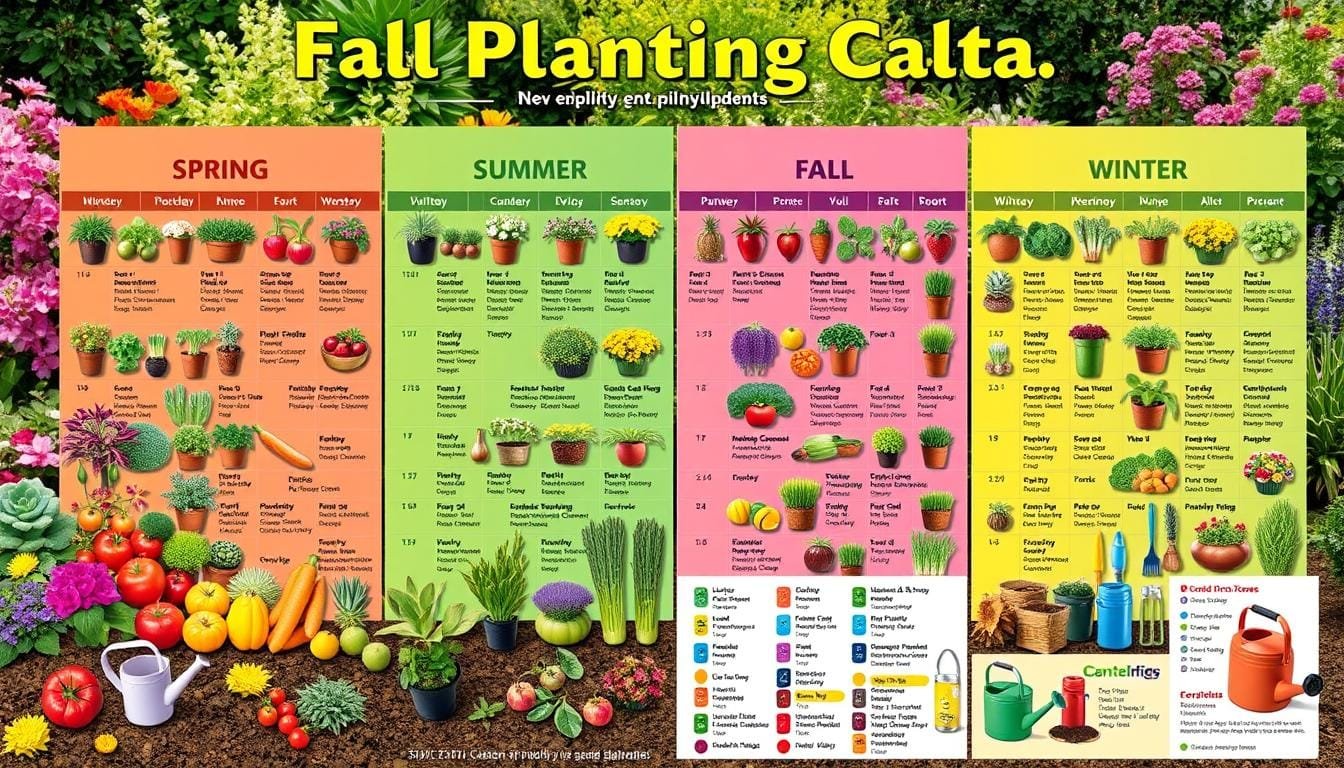A well-planned garden starts with a seasonal planting calendar. It helps you plan your planting schedule based on your area’s climate and weather. By using a garden planner, you can plant the right crops at the right time. This way, you make the most of your garden’s potential.
In Columbus, Ohio, the growing season is from May to mid-October, lasting about 150 days. With smart planning, you can extend this season. This helps you get more out of your garden.
- Maximize Dietary Value –– Curate meals with ingredients at their nutritional peak. Identify ripe and ready seasonal frui…
- Support Local & Save –– Choosing seasonal means leaning local and cutting down on transportation and storage. Actively s…
- Knowledge is Power –– No more sifting through online information or relying on memory alone. These seasonal fruits and v…
Using a planting calendar can make planting less overwhelming. It gives you clear guidance on what and when to plant. It’s important to think about climate, soil type, and weather patterns when making your calendar. This ensures a successful harvest and makes the most of your garden all year.
Key Takeaways
- Create a seasonal planting calendar to plan your garden’s activities
- Use a garden planner to tailor your planting schedule to your region’s climate
- Consider factors like soil type, weather patterns, and climate when creating your calendar
- Extend your growing season with strategic planning and maximize your garden’s yield
- Use a planting calendar to reduce feelings of overwhelm and ensure a successful harvest
Understanding Your Seasonal Planting Calendar
To make a good gardening plan, knowing your annual planting guide is key. A detailed planting season calendar considers your growing zone, weather, and frost dates. This helps you plan and plant the best way for your garden.
Finding your growing zone is a big step. The USDA Plant Hardiness Zone map helps pick plants right for your area. Knowing your zone lets you choose plants that handle your area’s weather and water.
What Makes a Planting Calendar Essential
A planting calendar is vital for gardening success. It keeps you organized and ensures your plants get the best care. Following a planting season calendar helps avoid planting mistakes that can harm your garden.
Identifying Your Growing Zone
Finding your growing zone is crucial for picking the right plants. The USDA Plant Hardiness Zone map is a great tool for this. Knowing your zone helps you pick plants that thrive in your climate, making a great annual planting guide.
Reading Weather Patterns and Frost Dates
Understanding weather and frost dates is key for your gardening timeline. Knowing your area’s frost dates helps plan your planting. For example, in areas with a last frost date of May 15, plant warm-season crops like tomatoes and peppers then.
By following these tips and making a detailed planting season calendar, you can have a successful garden. Stay organized and ask for help if you need it. Local gardening experts and online resources can be great resources for your annual planting guide and gardening timeline.
| Month | Planting Schedule | Frost Dates |
|---|---|---|
| March | Cool-season crops | Last frost date: March 15 |
| May | Warm-season crops | First frost date: May 15 |
| September | Fall crops | First frost date: September 15 |
Spring Planting Guide: March Through May
As the last frost dates get closer, gardeners can start getting ready for spring. A seasonal planting guide is key to planting at the best time. The best time to plant is from spring to fall. This is based on the last and first frost dates.
For example, summer bulbs should go in after the last frost. Cool-season veggies like broccoli and spinach are best in late summer or early fall.
A planting chart helps gardeners remember when to plant different things. Some plants, like perennials, can go in spring or fall. Warm-season veggies should go in late spring or early summer.
Fruit plants like strawberries and raspberries do well in early fall for a spring harvest. Herbs like parsley go in early spring. But basil should wait until after the last frost.
- Cole crops can be planted as early as Valentine’s Day (around February 14)
- Cool season root vegetables should be planted 2–3 weeks after cole crops (around early March)
- Ideal minimum daytime temperatures for planting cool season root vegetables range between 40 and 50 degrees Fahrenheit
By using a seasonal planting guide and a planting chart, gardeners can plant at the right time. This leads to a successful and plentiful harvest.
| Plant Type | Planting Time |
|---|---|
| Cole Crops | February 14 |
| Cool Season Root Vegetables | Early March |
| Summer Flowering Bulbs | After last spring frost |
Essential Summer Gardening: June Through August
Summer is here, and it’s time to plan for a great harvest. The best time to plant heat-tolerant crops is now. A good gardening calendar will keep you organized. With the last frost behind us, it’s time to care for our plants and get ready for a successful summer.
Watering is key in summer gardening. Your plants need about 1 inch of water each week. Use a rain gauge to know when to water. Shading can also help, keeping soil cool and moist.
- Planting heat-tolerant crops such as tomatoes, peppers, and eggplants
- Watering plants at least twice a day during hot weather
- Managing summer pests using natural methods or organic pesticides
Follow these tips and keep up with your gardening calendar. This way, you’ll have a thriving summer garden. Don’t forget to track your planting and harvest dates. This will help you improve your gardening plan for next year.
Fall Harvest Planning: September Through November
As summer ends, it’s time to plan for fall harvest. You need a planting schedule based on your area’s first frost dates. In the U.S., these dates are between September and November.
Using a garden planner is key for fall planning. It helps you schedule cool-season crops like broccoli, kale, and spinach. These crops love the cooler fall weather.
Other great fall crops include:
- Leaf lettuces, ready in 45 to 50 days
- Radishes, mature in about 25 days
- Swiss chard, edible in 25 to 30 days
Remember, the days to maturity for each crop can change with shorter daylight. For example, Cherry Belle Radish takes 25 days, but this can increase by 10-100% near the first frost.

With a planting schedule and a garden planner, you’re set for a great fall harvest. Plant cool-season crops on time and use mulch to save water. A bit of planning leads to a rich fall harvest.
| Crop | Days to Maturity | Planting Time |
|---|---|---|
| Broccoli | 55-65 days | 8-10 weeks before first frost |
| Kale | 50-60 days | 6-8 weeks before first frost |
| Spinach | 30-40 days | 4-6 weeks before first frost |
Winter Garden Preparation: December Through February
As winter comes, it’s time to get your garden ready for the next season. A good seasonal planting guide is key. It helps you use this time wisely. Creating a planting chart is also important to track your progress.
Some important tasks include:
- Cold frame gardening to extend the growing season
- Indoor seed starting for a head start on spring
- Winter soil maintenance to ensure optimal nutrient levels
By using a seasonal planting guide and a planting chart, you can have a successful garden all year. Don’t forget to think about weather, frost dates, and soil conditions when planning.
With the right planning, your winter garden can flourish. It will give you fresh produce and a sense of pride. Start your seasonal planting guide and planting chart today. Enjoy the rewards of a well-prepared winter garden.
| Month | Task |
|---|---|
| December | Plan and prepare soil for winter |
| January | Maintain perennials and start indoor seeds |
| February | Prune fruit trees and berry bushes |
Creating Your Customized Garden Planner
To have a great garden, you need a good garden planner with an annual planting guide. This keeps you on track for a successful gardening season. Your planner can be simple or detailed, but it should have a garden map, planting schedule, and a journal template.
A garden planner helps you avoid common mistakes. It keeps you from planting too late or stopping too soon. It also lets you track your progress and make changes for next year. For example, you can note which plants worked and which didn’t, and adjust your annual planting guide for better results.
A garden planner saves you time and money by avoiding mistakes. It helps you remember which plants didn’t work before, so you don’t replant them. It also helps you figure out how many plants fit in your space, preventing overcrowding.
- Include a garden map to help you visualize your garden
- Create a planting schedule to ensure you’re planting at the right time
- Use a gardening journal template to track your progress and note any changes
By following these tips and using a garden planner and annual planting guide, you can have a successful garden. Keep your planner organized and updated, and don’t hesitate to make changes when needed.
Companion Planting Strategies for Year-Round Success
Creating a planting schedule means thinking about how plants work together. Pairing plants that help each other can make your garden better. A good gardening calendar helps you use these strategies well.
Some great pairings include the “Three Sisters” method. This pairs corn, beans, and squash. Beans help corn, corn supports beans, and squash keeps weeds away. Tomatoes and basil together can also reduce pests by 20%.
Here are more strategies to try:
- Marigolds attract good bugs and keep nematodes away
- Dill brings in bugs that fight aphids
- Leeks keep carrot flies off when near carrots
Using these strategies in your planting schedule and gardening calendar makes a strong garden. It will give you many harvests all year.
| Plant Combination | Benefits |
|---|---|
| Tomatoes and Basil | Reduces pest damage by up to 20% |
| Corn, Beans, and Squash | Improves soil health and reduces pest issues |
Sustainable Gardening Through the Seasons
Gardening has a big impact on our environment. A good seasonal planting guide can help cut down waste and make soil healthier. With a few easy tips, you can make a garden that’s good for the planet all year.
Using a planting chart is key to sustainable gardening. It helps you use your space well and plant the right crops at the right time. For example, you can plant garlic and artichokes in late fall to get a head start on winter.
Here are some more tips for gardening the green way:
- Use mulch to keep moisture in and prevent soil erosion
- Plant native species, which need less water and fertilizer
- Make compost to improve soil and cut down on landfill waste
- Collect rainwater to use less municipal water
By following these tips and using a seasonal planting guide and planting chart, you can make a garden that’s good for the planet. It will also give you fresh, healthy food all year.

| Sustainable Gardening Practice | Benefits |
|---|---|
| Using a planting chart | Reduces waste, improves soil health |
| Planting native species | Requires less water and fertilizer |
| Utilizing compost | Enhances soil, reduces landfill waste |
Troubleshooting Common Seasonal Growing Challenges
As a gardener, knowing common challenges is key. Understanding these can help you prevent problems and keep your garden healthy. A gardening calendar is a great tool for this.
A good gardening calendar helps you plan for each season. For example, spring is a prime time for planting. Knowing when to plant can help your plants grow well. It also helps you prepare for weather issues like heat or frost.
Disease Prevention
Stopping disease is crucial in gardening. Practices like crop rotation and using resistant varieties can help. These steps keep your plants healthy and prevent disease spread.
Weather-Related Issues
Weather can greatly affect your garden. Drought or too much rain can harm plants. By understanding your local weather, you can protect your garden. Mulching and using weather-resistant plants are good strategies.
Soil Problems and Solutions
Soil issues like poor drainage or nutrient lack can hurt your garden. Knowing your soil and improving it is key. Soil testing and using organic amendments can help.
By following these tips and using a gardening calendar, you can tackle seasonal challenges. Always plant at the best time and seek advice when needed. This will help your garden thrive.
| Season | Challenges | Solutions |
|---|---|---|
| Spring | Frost, pests | Mulching, crop rotation |
| Summer | Heat, drought | Irrigation, shading |
| Autumn | Frost, pests | Mulching, crop rotation |
| Winter | Cold, darkness | Indoor planting, lighting |
Conclusion: Making the Most of Your Garden Year-Round
Starting your gardening journey? A good planting schedule and garden planner are essential. They help your garden thrive all year. Follow the tips in this article to make the most of your garden.
Learn about composting, water saving, and companion planting. These strategies will make your garden stand out. With hard work and creativity, your garden will become a beautiful, productive space.
Gardening is more than just growing food. It’s about the journey, the seasons, and the community it brings. By gardening all year, you’ll enjoy fresh food and help the planet. It’s a win-win for everyone.

